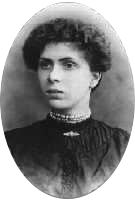Rudolf Grossmann aka Pierre Ramus
Rudolf Grossmann was born in Vienna on 15 October 1882, son of a Moravian Catholic mother and a Hungarian Jewish father. Although neither of his parents had any particular interest in politics, Rudolf was expelled from his high school for his political activities on behalf of the social democrats. In order to bridle their son’s political excesses, his parents sent Rudolf to the United States to live there with some relations. He promptly began contributing to the social democratic press there. In 1900 he became a contributor to Johann Most’s Freiheit and at around this time he flirted with anarchism. In 1901 he launched his own first newspaper Der Zeitgeist, a monthly with a supplement called Der Tramp. In 1902 he was sentenced to five years in prison along with the anarchist [William] McQueen for his prominent role in a silk-weavers’ strike in Paterson, New Jersey. He left the United States with the name Pierre Ramus which he held on to after that. His escape to England was made possible by the fact that an anarchist who was a wine merchant posted a substantial sum as bail for him. There was some question as to Ramus’s gratitude to this comrade and this stirred up quite a few arguments within the anarchist movement.
Settling in London, he became a leading light of the local anarchist scene, publishing various articles in German and English newspapers, striking up a friendship with Rudolf Rocker and above all with Kropotkin whom he regarded as his mentor. It was also in London that he met the anarchist Sonia Ossipovna Friedmann, a Russian Jew who was later to become his wife. In London he developed a thorough knowledge of the social sciences and economics and also showed a great gift for learning languages.
In 1907 he moved to Vienna where he soon became the most famous Austrian anarchist. There, Ramus was insistent that anarchist thought and marxism were incompatible. He launched the newspaper Wohlstand für Alle and then, from 1910 to 1914, he produced Das Jahrbuch der Freien Generation. All of his published work tended to point up the contrasts between marxist teaching and anarchist thinking.
Ramus undertook a lot of travel thanks to which he managed to set up an anarchist trade union federation which was active on Austrian soil from 1908 to 1914, and went on to establish the Bund Herrschaftloser Sozialisten (Union of Libertarian Socialists) in 1919.
Meetings and debates took place near Ramus’s home every Sunday. The anarchist Sigler described these gatherings like this: ‘Those present were tradesmen, self-educated folk and tramps. The latter are propagandists who wander from factory to factory, from town to town, always on the move and fighting like wild animals to defend their freedom.’
According to Ramus, anarchism had to radiate outwards from the family circle. The Ramus household followed a vegetarian regimen and shunned alcohol, whilst his children were educated in accordance with Ferrer’s principles.
During the First World War Ramus was jailed twice on charges of treason and espionage, but these fell through. In 1918 he gave his endorsement to the Russian revolution but was critical of the use of violence and never ceased challenging the notion of dictatorship of the proletariat.
In his book The Lesson of Madness and Marxism’s Lack of Science in Terms of Socialism, Ramus set himself the task of offering an historical interpretation not just of the revolution but also of marxist theory as a whole. Essentially, he queried the representation of Marx and Engels as classics of socialism and thus rejected marxist theory as anti-socialist. Ramus looked on marxism as a sort of theological principle governing thought and action. In his view, Marx’s teaching took no account of subjective factors and therefore ultimately absolved individuals of all responsibility.
Ramus forcefully argued for the rights of minorities and in pursuit of this he published Erkenntnis und Befreiung (Consciousness and Liberation). He was still active in the Union of Libertarian Socialists which had 4,000 members in 60-70 local groups in 1925. And during those years Ramus also sponsored a number of experimental communities.
After Austria was absorbed into the Third Reich in 1938, he fled to Morocco via Switzerland, France and Spain. His extensive library was taken over by the International Institute for Social History in Amsterdam. Meanwhile, his wife Sonia and daughters Lilly and Erna reached Mexico where they also secured a residence permit for Pierre. But Ramus died on the voyage from Morocco to Mexico in 1942. The authorities ascribed death to a heart attack but this was not universally accepted. His wife Sonia died in 1974 and his daughter Lilly – to whom we are indebted for much of this information – died in the United States just three years ago.
Ramus did not belong to the socio-political brand of anarchism but tended rather to favour the cultural side of things. And is remembered more for his invitation to change reality through the processes of cultural renewal.
Bollettino Archivio G. Pinelli (Milan) No 24, December 2004
[KSL note: William MacQueen and Ramus were both bailed by Philip Geyer – more at ‘“Our Cause May Grow The Richer,” Some thoughts on Billy MacQueen’ by Barry Pateman at https://www.katesharpleylibrary.net/5tb49z in KSL: Bulletin of the Kate Sharpley Library No. 110-111, August 2023]
Subjects:
- Anarchism
- Austria
- History of Anarchism
- Lives (biography, autobiography)
- MacQueen, William (1875-1908)
- Marxism
- Propaganda
- Ramus, Pierre (1882-1942)
- United States of America USA
Similar items
- Ramus, Pierre and Eugen Relgis. Why does Anarchism progress so slowly?.
- Lessons of the Revolutions in Germany and Austria Meeting flier (1925).
- Ramus, Pierre. Anarchism: Its Aim In The Present.
- Anarchism in Austria: A Brief Outline.
- Ramus, Pierre. The Supreme Task of International Pacifism : As Viewed by an Anarchist [Pamphlet].
